New Boston Historical Society
New Boston, New Hampshire
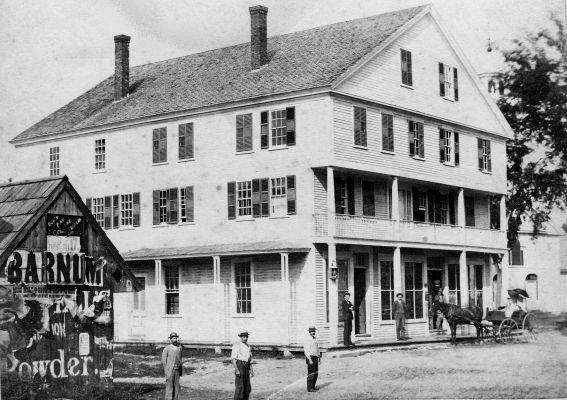
Solomon Atwood's store before the Fire of 1887
New Boston's General Stores
In the late 1800s, Clarence Dodge owned a store in the red brick building that is now a private home across High Street from the bank. Solomon Atwood owned a store on the property that is now Dodge's Store across from the Historical Society building. Today the buildings look much as they did in 1897, although the Post Office and Library have each relocated since then.
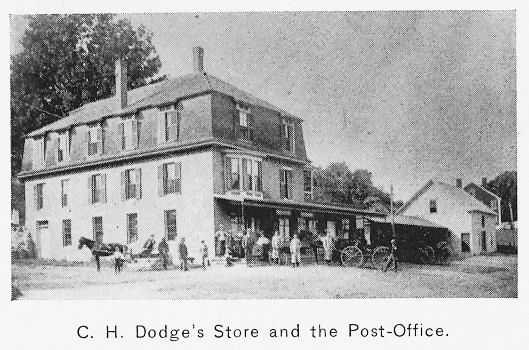
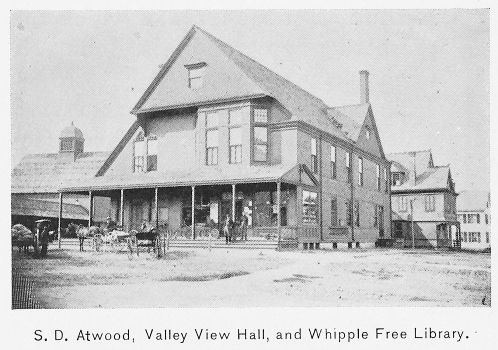

Solomon D. Atwood, son of the late Rev. John Atwood, came here from Concord [in 1851] at the age of twelve... He went into trade with J. K. Whipple as partner in 1860, and with several changes of firm, except for eighteen months after the fire of 1887, has continued in trade to date. He is a stalwart Republican, a leader in his party, postmaster under Republican rule since 1861, active in the cause of education, and a generous supporter of the Baptist society.
Clarence H. Dodge, son of Capt. Benjamin Dodge, born here on April 22, 1848, is a young man, a very successful merchant of widening reputation, whose business and social qualifications have made for him a host of friends... He is [a] leader in the Democratic party, has been postmaster eight years, a Mason of commandery degrees, and reliable supporter of the Presbyterian society, as well as loyal to all New Boston interests.
At this time, the job of Postmaster was a political appointment. Solomon Atwood, the "stalwart Republican", was appointed postmaster in 1860 by the administration of President Lincoln. Having the town post office in his general store must have been good for business!
Clarence Dodge, the "leader in the Democratic party", opened his store in 1872 but had to wait until a Democrat was elected to the White House in 1884 before he could be appointed postmaster and move the post office to his store. Grover Cleveland lost the election of 1888 which was bad news for storekeeper Dodge but he got his post office back for another four years when Cleveland was re-elected in 1892. Then Atwood was postmaster again, and then Dodge, until after World War II the US Postal Service hired professional postmasters and the post office was moved out of the general store.
Here are a few more pictures of Clarence Dodge's store before the business moved across the river to what was Atwood's store. It was originally a two-story building, built in the 1860s by Solomon Atwood(!) and his partner Joseph K. Whipple.
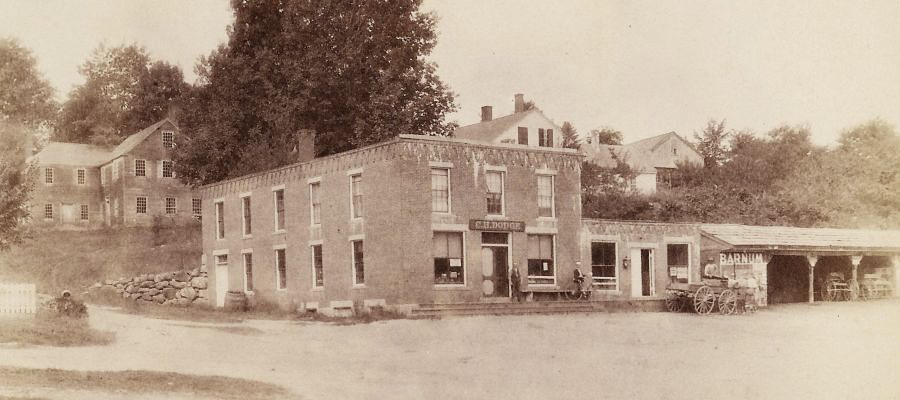
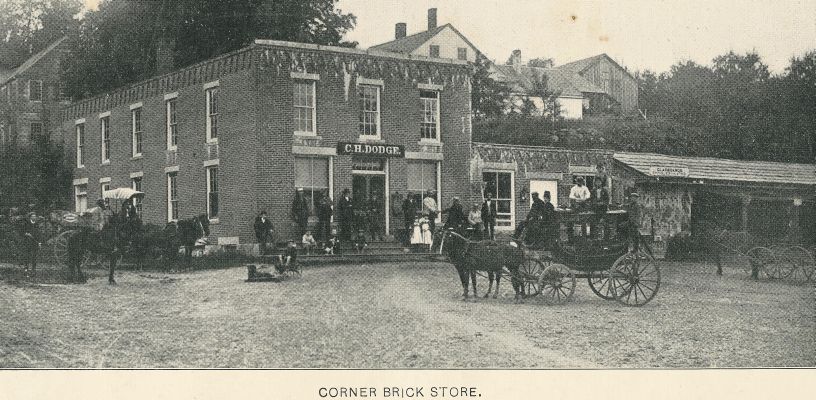
John Jenkinson says his great-grandfather Benjamin Dodge is the small boy in the little wagon near the steps of the store.
From a description in the 1908 "Old Folks' Day" booklet of this photo from the late 1800s of the Corner Brick Store and stagecoach:
The old coach will recall the exhilarating rides from this place to Parker's Station. When seated beside the driver or on the higher seat upon the top how delightful was the trip. The lovely glimpses of the river and the opposite shores as we wound along following its circuitous channel, the clear, bracing air, the excitement of ducking our heads to avoid being swept over by the over-arching branches of the beautiful trees... made up an hour's enjoyment.
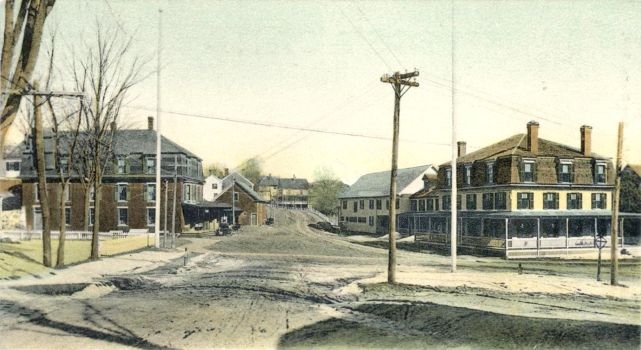
Looking north up High Street, C. H. Dodge's store is on the left, now with a third story.
The Tavern on the right was torn down and the nearby white building was moved to that location. It is now the bank building.
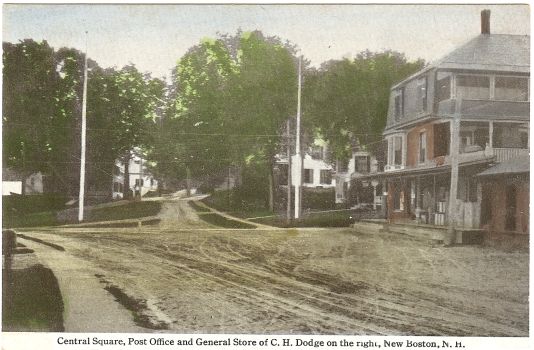
Looking south down High Street, C. H. Dodge's store is on the right.
Will Warren is blacksmithing for J. N. McLane. He will move here as soon as a tenement is ready for him."No noise was heard from the dog who occupied the store." If you are a fan of Sherlock Holmes, you might remember that in 1892 Sir Arthur Conan Doyle wrote a short story with this dialogue:
Part of the lumber is on the ground to build the story over C. H. Dodge's store which will be the nicest tenement in the village.
The store of C. H. Dodge was again broken into the night of April 14th. The money drawer was robbed of all the coin except coppers. Boots and shoes were scattered about, it being impossible to tell how many were taken. Cigars are also missing.
An entrance was effected through a window in the second story and the door between the back and front store broken open. The noise was heard by neighbors, though no noise was heard from the dog who occupied the store.
Gregory (Scotland Yard detective): "Is there any other point to which you would wish to draw my attention?"We do not know of any connection between the Sherlock Holmes story and the burglary of C.H. Dodge's store the following year.
Holmes: "To the curious incident of the dog in the night-time."
Gregory: "The dog did nothing in the night-time."
Holmes: "That was the curious incident."
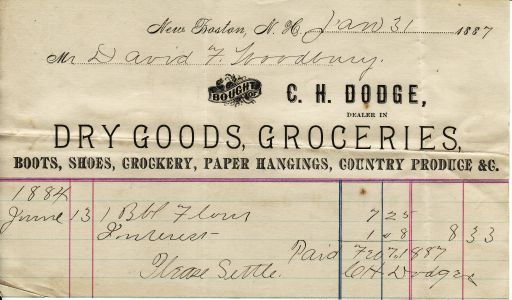
The Historical Society has an 1829 ledger from an anonymous New Boston general store which gives us an idea of its importance to village life. Ledger notations show that rum was sold by the glass or the gallon. Imagine the inventory of a store that sold: garden seeds, straw hats, calfskin shoes and thick boots, candles, spelling books and a geography atlas, a dictionary (returned), "good tobacco", codfish, a riding bridle, molasses, gunpowder, shot and flint, calico, ribbon and lace, lamp oil, scythe stones, loaf sugar and salt pork. Cash was lent "to go to Amherst" or for unspecified purposes; money was paid "for the use of a wagon" or "use of a horse" or for "fetching up from Boston 1 barrel Flour."
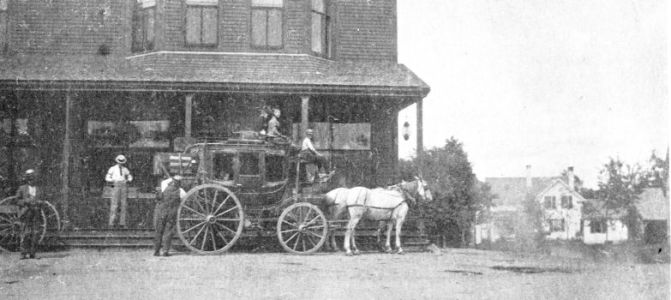
Atwood's Store in 1892
In 1869 Solomon Atwood and his new partner Henry Kelso moved their store from the red brick building on High Street (where Clarence Dodge later opened his first store) to a better location. Amos Tewksbury had built a large square two-story building with a front porch on this site in 1836, and the store was later operated by James and David Gregg.
Atwood and Kelso enlarged this store, adding a third story. See the photo "Before the Fire" at the top of this page.
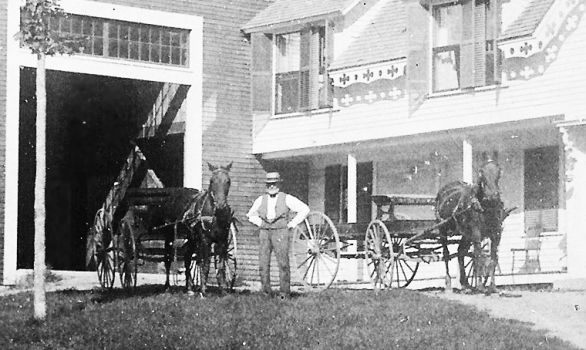
Solomon D. Atwood's home on High Street is now New Boston Dental Care and Elliot Family Medicine.
Atwood is seen with his open buggy, his order wagon, his horse named "Pit" and an anonymous horse.
In the 1920s Clarence Dodge moved his business across the bridge to the building which was Atwood's store. Generations of Dodges including Clarence, Benjamin, Homer and Josh Dodge ran the store until 1995. Mike Danzinger purchased the business, renovated the building and operated Dodge's Store until 2011.
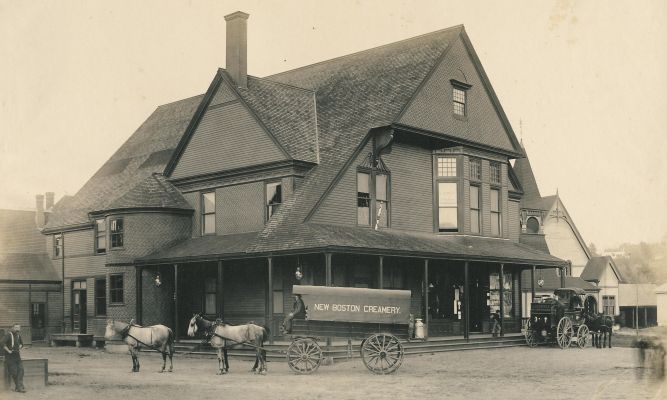
There is a barber's pole in front of the window above the Creamery wagon.
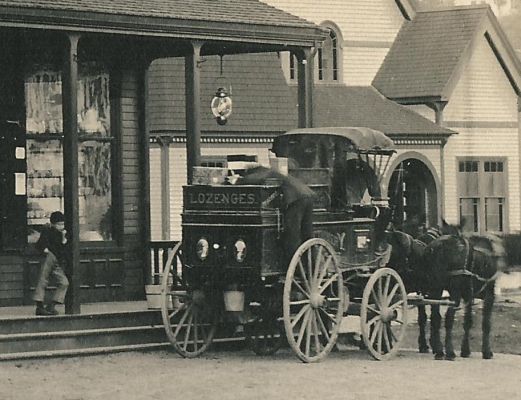
Detail from photo above. The Baptist Church in the background was torn down in the 1940s.
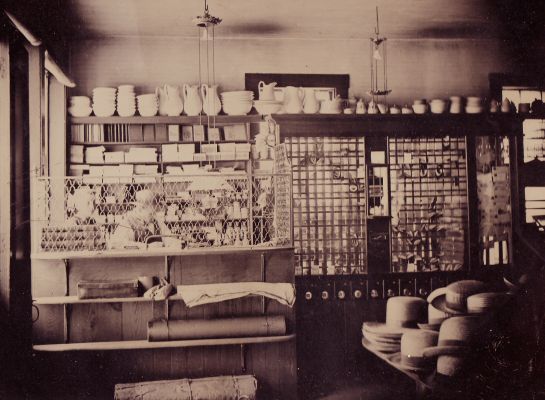
Tintype labeled "post office in S.D. Atwood's store, c.1890(?)"
We're not sure about the date or in which store this P.O. was located.
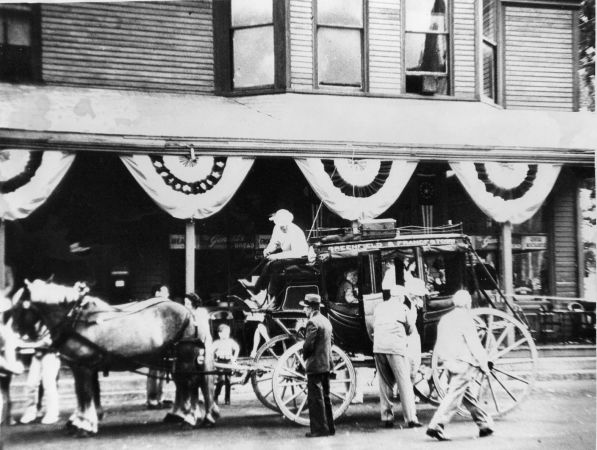
Greenfield & Francestown stagecoach in front of Dodge's Store c. 1927
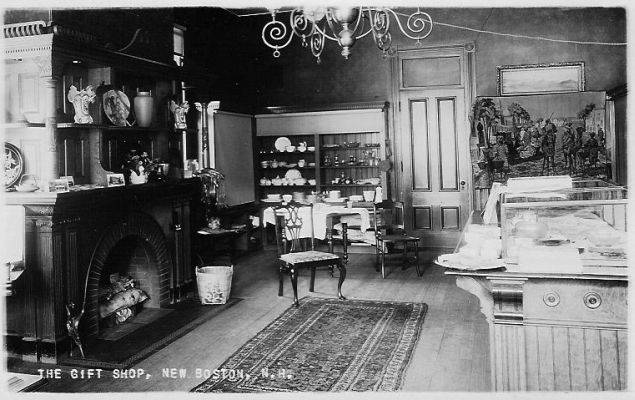
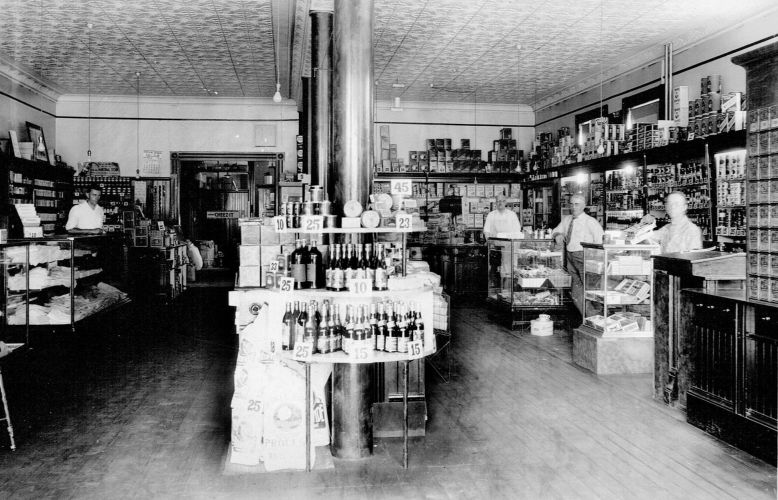
Homer Dodge is at the far left; his father Ben is second from the right.
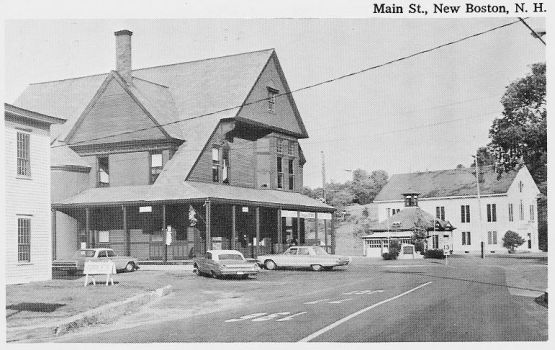
Dodge's Store in the 1960s
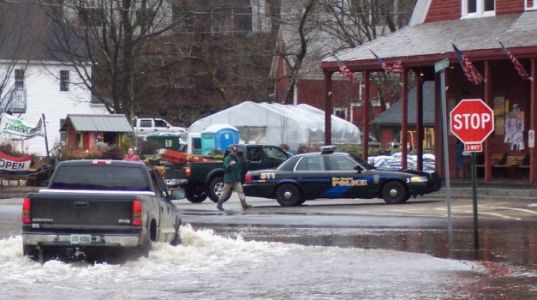
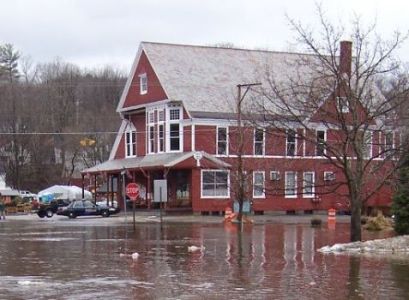
Dodge's Store has survived fire and floods. The village center seemed empty when the store closed for several months in 2011.
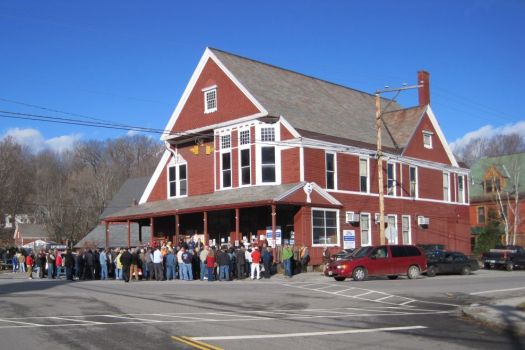
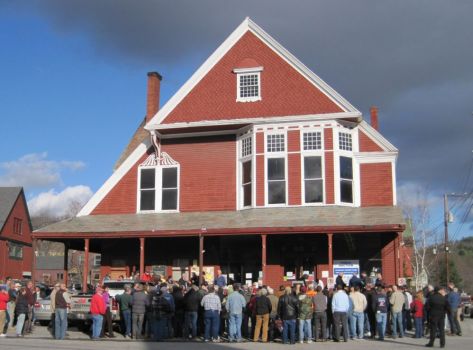
Dodge's Store was sold at auction in November of 2011 to a New Boston family and reopened January 11, 2012.
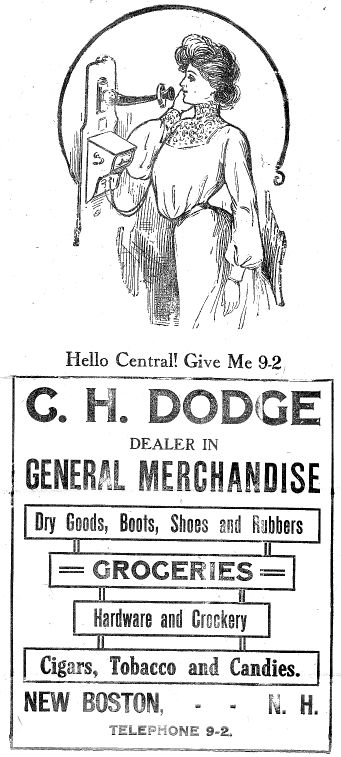
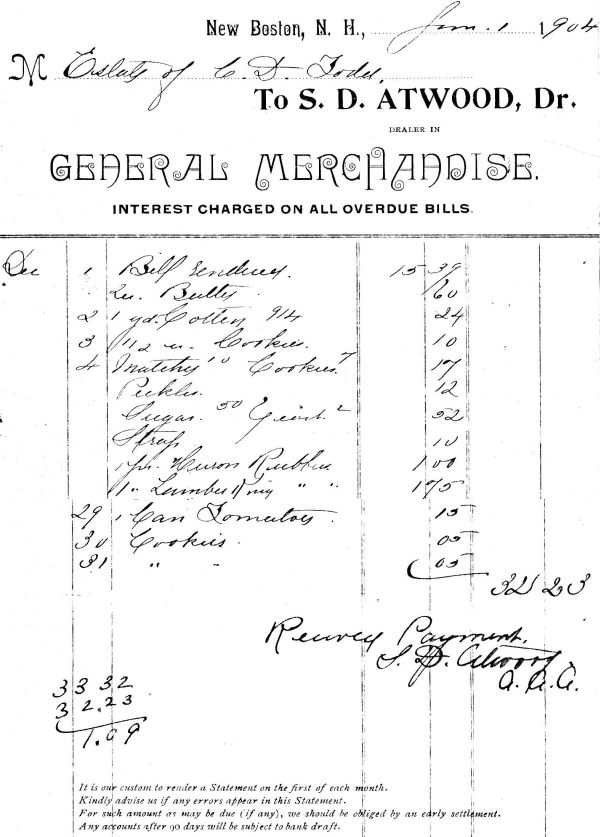
The First Dodge's Store?
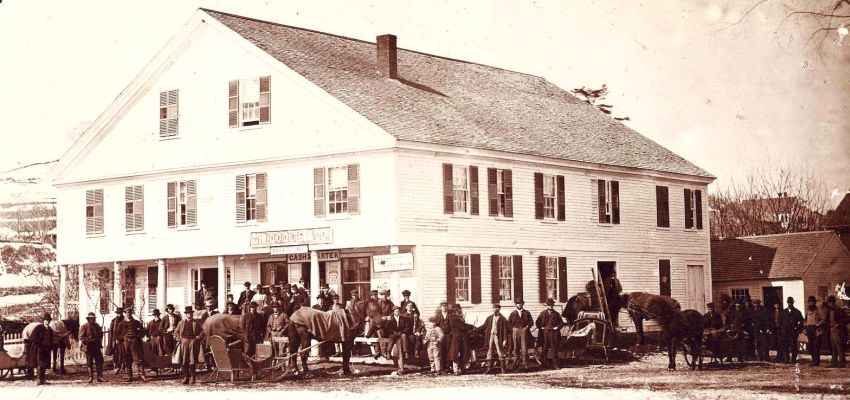
This photo of C.W. Dodge's store in winter shows customers arriving by sleigh.
Who was "C.W. Dodge" and where was his store located?
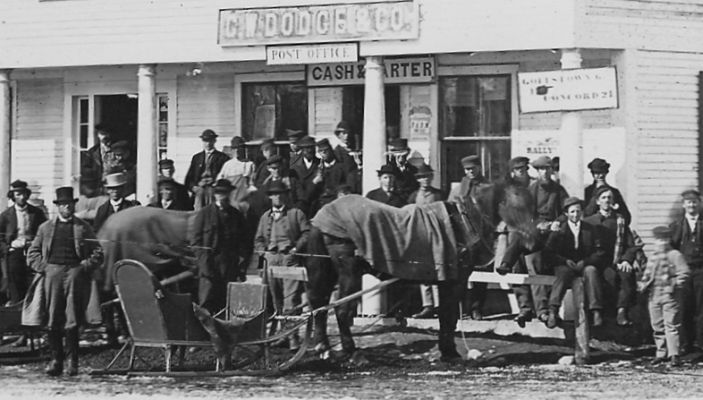
Detail from the photo above.
Our history book suggests "The throng in front may have been gathered to attend an early town meeting."
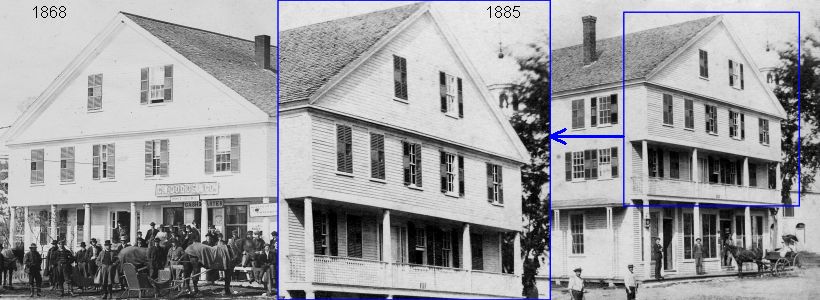
C.W. Dodge & Co. 1868 store on left looks like the upper floors of Atwood's 1885 store in center and right photos.
Atwood appears to have jacked up the entire building and added a new ground floor.
Who was "C.W. Dodge"? The 1869-1870 "New Hampshire Political Manual and Annual Register" lists Charles W. Dodge as postmaster for New Boston and also lists "Merchants - C.W. Dodge & Co. and Whipple & Atwood." Charles W. Dodge was the son of Perley Dodge and about six years older than Clarence H. Dodge. Perhaps the two men were cousins, but we haven't yet found a common ancestor.
2018 update: After many hours of research, we have determined that C.W. and C.H. were first cousins once removed. Perley Dodge, the father of Charles W. Dodge, was the brother of Samuel Dodge, the grandfather of Clarence H. Dodge.
While we were investigating Dodge genealogy, which is a tangled web indeed, we also found that Solomon Dodge Atwood was the second cousin of his competitor Clarence H. Dodge. Atwood's grandmother Elizabeth Dodge Dodge was the sister of Dodge's grandmother Monice Dodge Dodge. Your eyes do not deceive you; both of the grandmothers were Dodges before they married men named Dodge.
The 1885 "History of Hillborough County" tells us that "Charles and Clarence Dodge opened a store on the premises formerly occupied by A.W. Tewksbury; the senior partner [Charles], on retiring, was succeeded by George Warren; since his withdrawal C.H. Dodge has carried on business alone."
We now believe that Charles W. Dodge owned a store on the site of the current Dodge's Store in 1868. Clarence H. Dodge went to work with him and later became sole proprietor and moved the business across the river to the brick store which had been owned by Solomon D. Atwood.
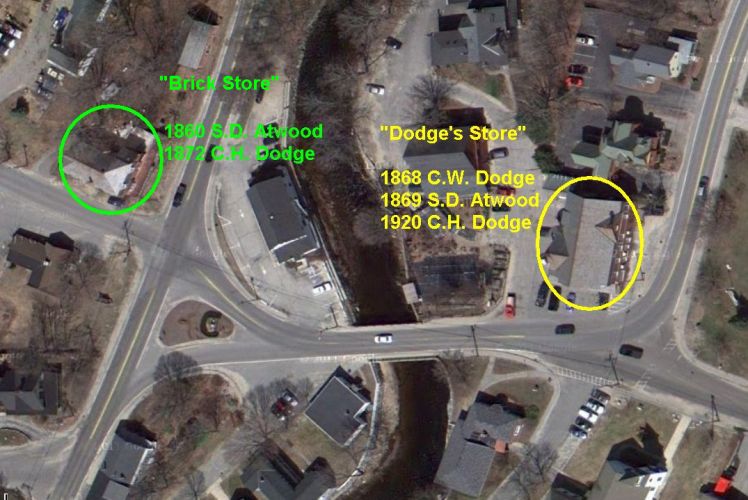
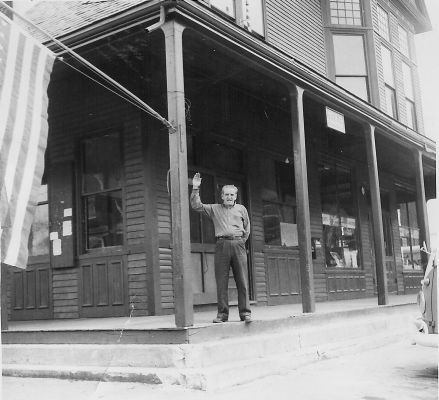
Gus Andrews had served as New Boston's postmaster for 15 years when this photo was taken in 1963.
At this time, the Post Office was still attached to Dodge's Store.
Gus came to New Boston during World War II to work at the Joe English Bombing Range and married a local girl, Lucille Kenney.
